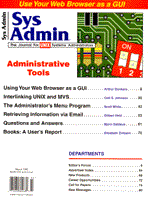
Sidebar: The Physical Layer -- OSI vs. SNA
The first layer in the OSI model is the physical layer, which encompasses a transmission medium, a signaling method or transmission technique, a topology, and the interface hardware. This layer is responsible for the actual transmission of data bits across some transmission medium. The transmission medium is the physical resource responsible for carrying the electrical (or other physical) signal and could consist of copper, fiber optics, or a radio signal. The transmission technique refers to the electrical signals themselves. If the electrical signals are purely digital, that is, 1s and 0s, the transmission technique is said to be baseband. If the electrical signals are modulated onto some other carrier signal, such as when using a modem, the transmission technique is said to be broadband. The topology describes the physical layout, or pattern, of the cable in the building or facility. This could be a star, ring, or linear pattern. The final component in the physical layer, the network interface circuitry, connects the network station to the network media. Typically this circuitry is packed onto a single card called the network interface card (NIC). In a typical UNIX or open systems network, the transmission would be copper wire, probably in the form of ThinNet coaxial cable. ThinNet networks use a baseband transmission technique over a linear topology. The typical NIC would be an Ethernet card, such as a 3Com 3C509 card. Although both architectures have a physical layer component (it's defined below the stack in SNA, but it still exists), this component is quite different. IBM mainframes use channel cables to connect each SNA device onto the network. These channel cables are actually a parallel (multiwire) interconnection consisting of bus and tag lines. Simply put, the tag line controls the data that flows on the bus line. Signaling on these cables is not compatible with the signaling used in Ethernet. Devices are connected in a star pattern, and each point on the star can contain daisy-chained devices. To physically connect an IBM mainframe to Ethernet cabling, a special box is required that accepts both types of cabling. This box then provides the necessary datastream conversions to couple the two systems.
|